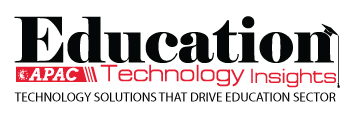THANK YOU FOR SUBSCRIBING
Be first to read the latest tech news, Industry Leader's Insights, and CIO interviews of medium and large enterprises exclusively from Education Technology Insights
Leveraging Nudge Tech for Student Engagement
Patty Patria, Chief Information Officer, Babson College
 Over the last several years, Artificial Intelligence (AI) and nudge technologies have emerged as separate tools to help universities and students meet their needs. Some institutions leverage AI to help determine the best applicant pools. Others leverage AI to help improve retention and identify students who might be struggling or need assistance. However, when you combine AI and nudge technologies, you have powerful tools that can identify students that may need assistance in a particular area and provide automated outreach and communications to engage those students better to achieve improved outcomes.
Over the last several years, Artificial Intelligence (AI) and nudge technologies have emerged as separate tools to help universities and students meet their needs. Some institutions leverage AI to help determine the best applicant pools. Others leverage AI to help improve retention and identify students who might be struggling or need assistance. However, when you combine AI and nudge technologies, you have powerful tools that can identify students that may need assistance in a particular area and provide automated outreach and communications to engage those students better to achieve improved outcomes.
One of the best uses of AI and nudge technology is combing both technologies to provide scalable personalization of prescriptive nudges to meet each student’s real-world challenge; those challenges could be financial, emotional, academic, or just feeling connected to other students. By collecting data from various systems (Learning Management Systems, Student Information Systems, student activity systems, card swipes, etc.), institutions can build a profile of attitudinal dimensions and then create personalized nudges that establish authentic and trusting connections that help improve outcomes.
To be effective, nudges should be used at the proper time and must be easy for the student to follow. As an example, if AI running in the background sees a student’s grade starting to drop, it can send a nudge to recommend the student sign up for tutoring, providing a link to make it easy to schedule an appointment. Alternatively, if your system is sophisticated enough to look at multiple variables, it could prompt a nudge in the form of a phone call or well-being check if multiple concerns surface at one time.
In addition to assisting with outreach, there are also some new technologies that leverage AI to assist with group work. Although STEM skills are still critically needed in today’s society, soft skills and the ability to work collaboratively are also becoming just as important, making digital collaboration an essential role in the modern student’s education journey.
“Adding AI and prescriptive nudges to the mix can help institutions better engage with students and build life-long relationships with Alumni.”
As we move into a hybrid world where some students want to connect in person and others virtually, building the right collaborative teams, whether virtual, in-person or hybrid, is more important than ever. New technology now allows colleges and universities to analyze individual students’ capacities, strengths, weaknesses, learning styles, and mindsets and then provide instructors with recommendations on how to configure these students into groups that enhance the student’s ability to collaborate, learn and progress. The technology also allows for automated nudges to improve outcomes.
As students graduate and become alumni, AI and nudge tech are also starting to play an increasingly larger role for Advancement teams. Leveraging AI and predictive modeling, Advancement divisions can analyze the propensity to give or participate and then develop targeted, personalized nudges with drip campaigns to help improve alumni engagement and giving.
As higher education evolves, data-informed decision-making is becoming critical to all institutions. However, adding AI and prescriptive nudges to the mix can help institutions better engage with students and build life-long relationships with Alumni.
Read Also
Empowering Educators through Purposeful, Connected and Transformative Learning
Empowering Students to Lead: A New Vision for Civic Learning
The Director's Playbook: Strategic Digital Transformation in Rual Hyper-Growth Districts
The Art and Architecture of Student Support
From At-Risk to At-Promise: The Language Revolution Higher Education Needs
Teaching Tomorrow: How Western Governors University Is Redefining Teacher Preparation

I agree We use cookies on this website to enhance your user experience. By clicking any link on this page you are giving your consent for us to set cookies. More info






















